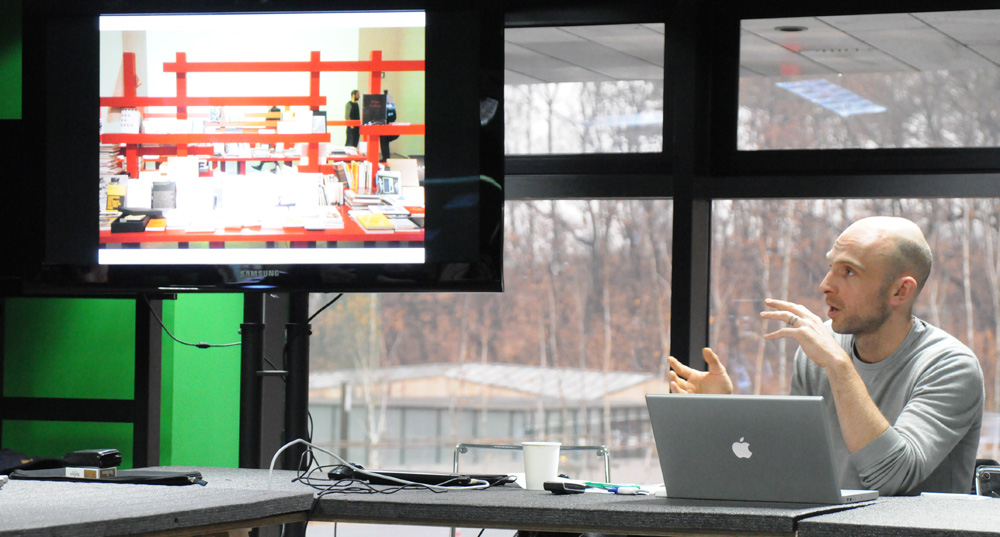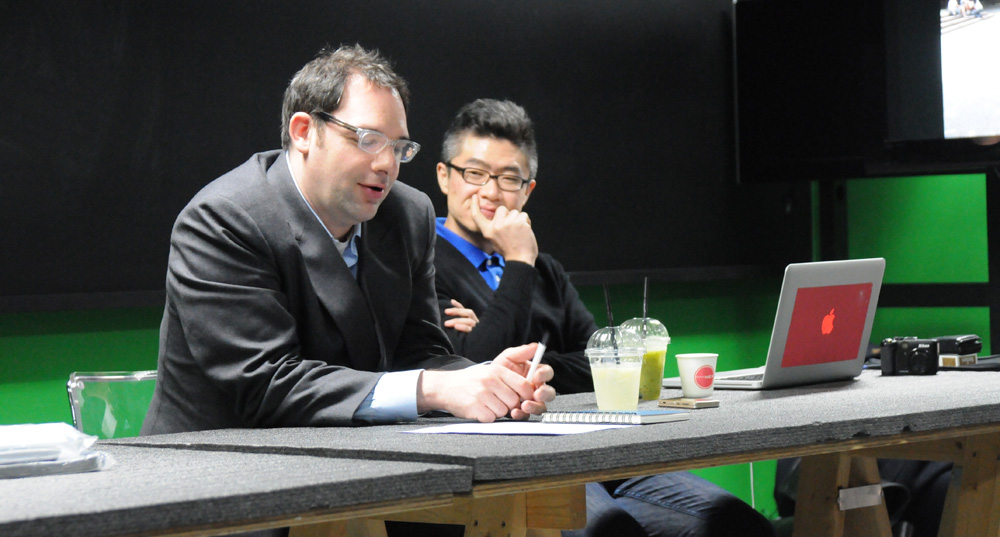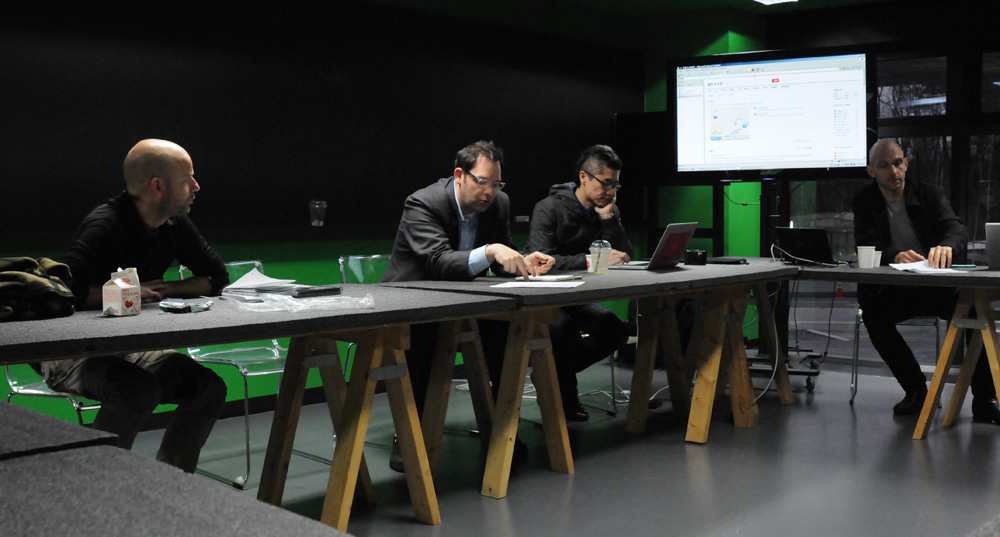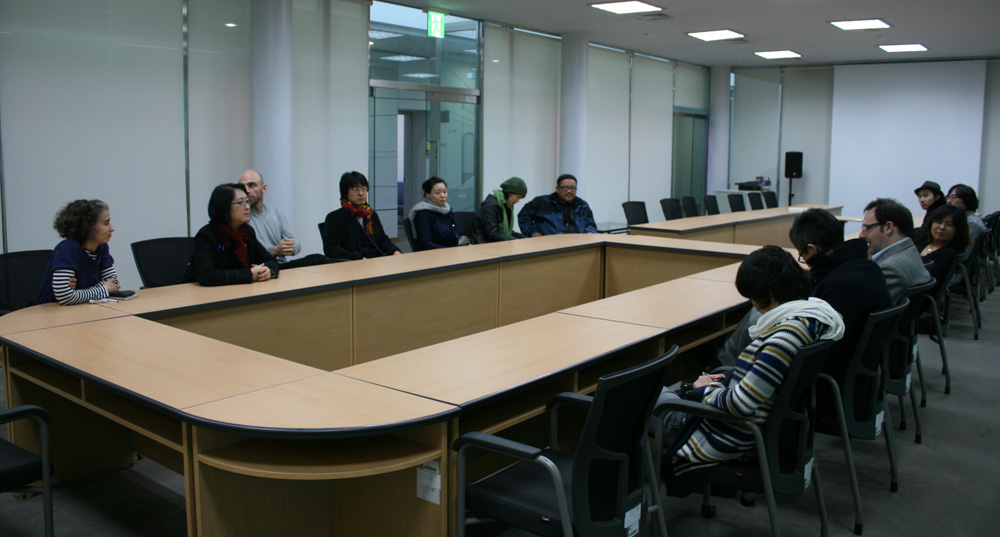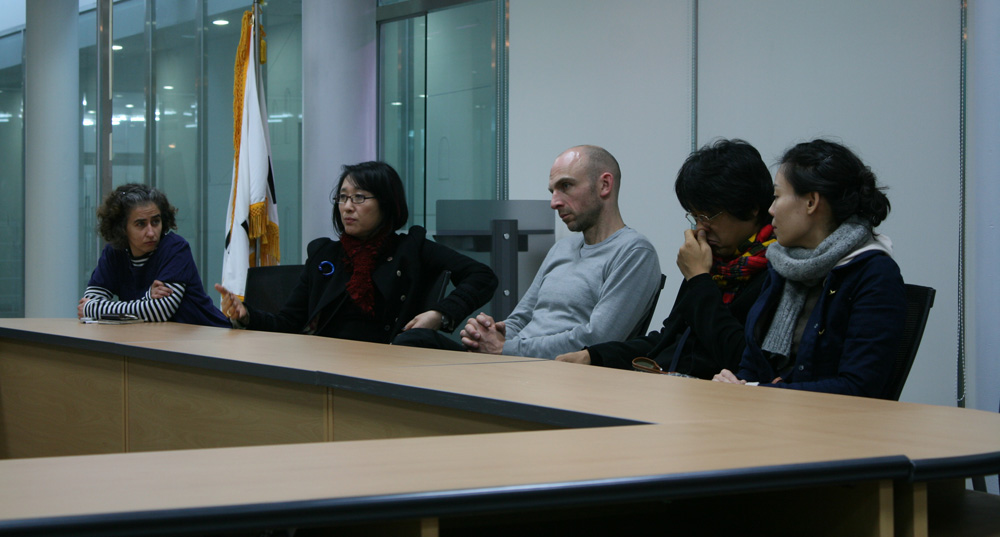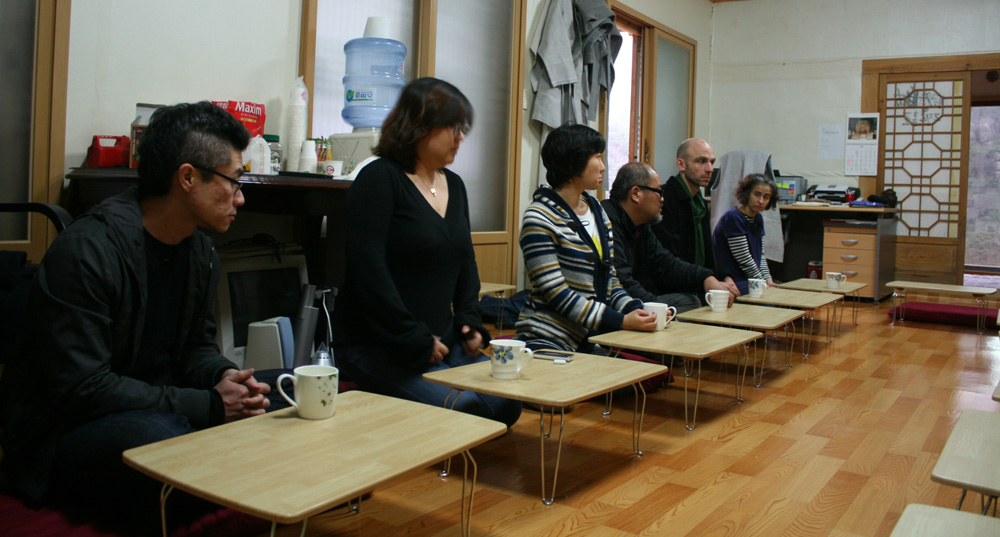Through artistic practice, the way we see the world and our perceptions of what is possible is continuously redefined. It is through artistic practice that the realm of the possible is extended beyond mere functional efficacy to reopen human action as integrated into a wider ecology of potentialities.
This role for art that exists beyond 19th century, western values requires a continuous re-thinking of how, where, and with whom this practice is exhibited. What new catalysts and interfaces can be developed to potentiate the innovations present in contemporary artistic practice? How can the different practitioners, from the institutional sector to the freelance, communicate their practices and engage with their diverse audiences? How can local, regional and international exchanges be initiated between different types of publicly responsible institutions (such as art centers, universities, design institutes) to share and develop discourse and research together?
The Nam June Paik Art Center proposes a three day workshop as an opportunity for its staff and invited participants to address these questions in a dynamic and constructive environment. Days one and two will be internal workshops that will involve some group activities to promote more open discussions and the third day will be an opportunity to share and discuss, with a wider public, findings, questions and any potential new concepts that may have emerged during the internal sessions. To inform this initiative, an introduction to the Nam June Paik’s work and the communicative strategies it implies in its engagement with the public would be the starting point. In addition, questioning and imagining potential roles and missions for an art center dedicated to the complex legacy of an artist such as Paik would offer a productive case study because of the questions regarding the exhibition of new ideas related to technology and communication in the old frameworks such as art centers or museums. How can these old frameworks be re-structured to embrace the innovativeness and indeterminacy that made Paik’s practice the paradigm shift it represented?
・ Moderator : Tobias Berger・ Introduction of participants
How can it be made productive? The ‘emancipated spectator’ challenges education, participation and inclusivity. With education as a new paradigm for discourse production, artistic practice, and curatorial practice, and the question of participation and inclusivity as the default horizon for institutional decision making processes often based on similarly influenced funding criteria, what artistic practices and challenges to the knowability of curatorial processes can be posed by both artists and ‘the emancipated spectator’?
Edgar Schmitz Edagar Schmitz is an artist working on politics of confusion and ambient attitudes, lectures in Visual Cultures at Goldsmiths’ College, London, publishes in Kunstforum International and Texte zur Kunst, and curates for the ‘Zamyn’ think tank, London. Recent exhibitions include London Movies, Palais des Beaux Arts, Brussels, and Liam Gillick : Edgar Schmitz, ICA, London. His new book Ambient Mode, on the poetics and politics of dispersed engagements is forthcoming with Lukas & Sternberg, New York.
Heath Bunting Heath Bunting is a co-founder of both net.art and sport-art movements and is banned for life from entering the USA for his anti GM work. His self taught and authentically independent work is direct and uncomplicated and has never been awarded a prize or been bought or sold. He is both Britain’s most important practicing artist and The World’s most famous computer artist. He aspires to be a skillful member of the public and is producing an expert system for identity mutation.
Heman Chong Heman Chong received his M.A in Communication Art & Design from The Royal College of Art, London in 2002 and is now based in Berlin and Singapore. His art practice involves an investigation into the philosophies, reasons and methods of individuals and communities imagining the future. Charged with a conceptual drive, this research is then adapted into objects, images, installations, situations or texts. He is represented by Vitamin Creative Space (Guangzhou/Beijing).















